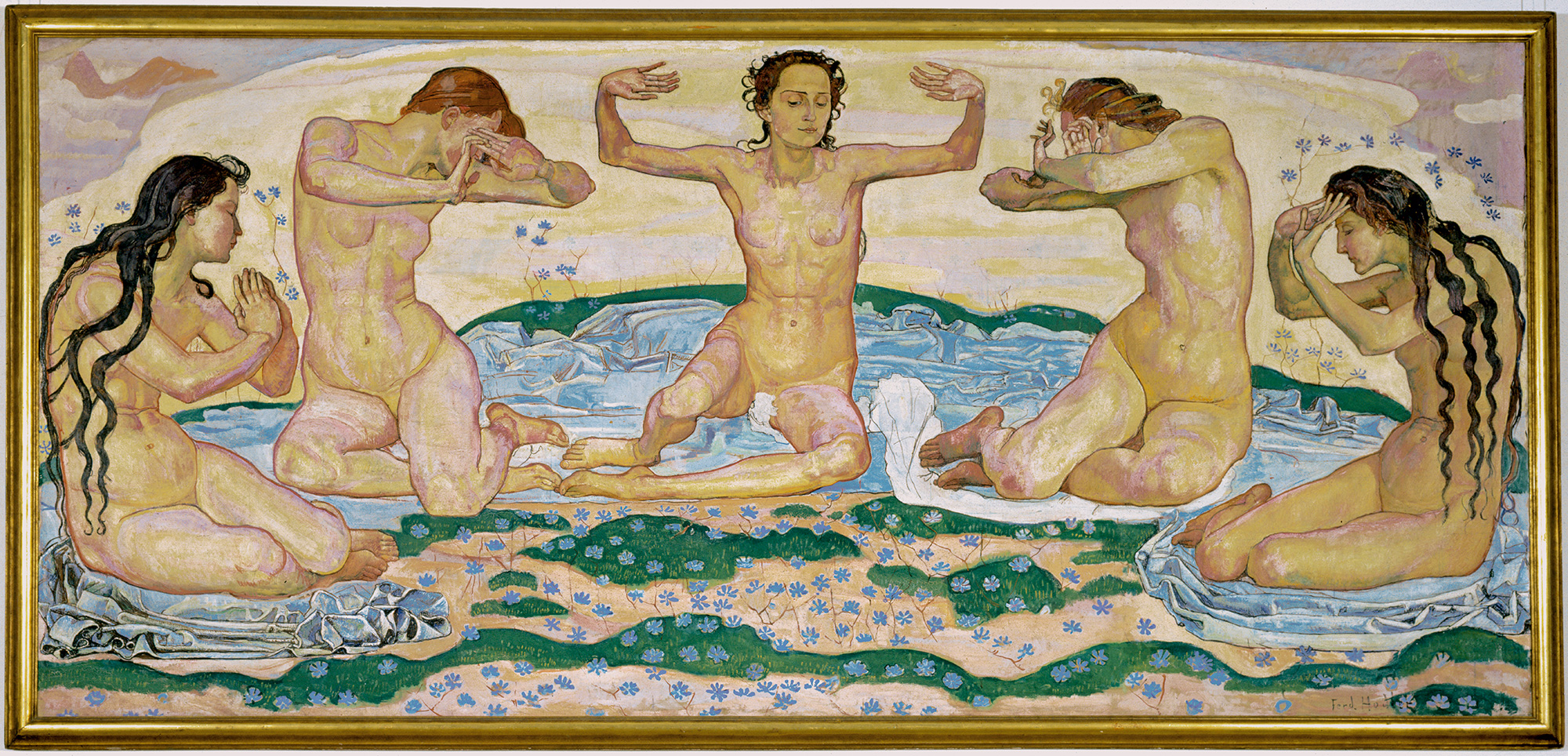In its final form, the composition of The Day presents the various stages of waking as a succession of gestures. „The women have awoken from sleep and [some] are shielding themselves from the influx of daylight; the others have passed through this phase and are admiring the splendour of the day, represented by the flowers scattered across the bottom of the picture. Together, the expressively charged gestures of the arms form a semicircle and make up the work’s upper ornament. The lines of the bodies are disengaged; the feet and legs form a series of closed forms.“
This description of the subject by Ferdinand Hodler himself focuses on its interplay of symbolic expression and ornamental gesture. Five women are seated on a blue cloth in a meadow; the ground is strewn with delicate flowers, their colour echoing that of the cloth. As the yellowish light of dawn rises above the arc of the horizon, the four outer women turn to face the figure in the centre, the expression conveyed by the twist of their bodies and by the position of their arms and hands ranging from the fearful to the rapturous. The central woman, her arms lifted as in some ritual prayer, opens herself up to the rays of light freely, without shielding herself from them. Combining with the gentle ups and downs of the meadow, the sequence of gestures and the dancelike torsion of the bodies generate a subtle choreography of expressive values that encompasses the entire painting.
With its light colour and ecstatic ornament, The Day opposes the gloom of The Night (featured in DailyArt before) with a blissful symphony of growth. Berthe Jacques, whom Hodler had married in 1898, sat for the figures. In his art, she represented the archetypal ethereal woman, epitomising purity and truth.
By the end of the 1890s he had won his battle for public and material recognition. Hence Der Tag can also be seen as a private hymn to the light that was illuminating his life after the deprivations of the earlier years.
In this view, Hodler evoked his personal situation by infusing his art with the joy of a fresh start. The enormous success of the painting at the Exposition Universelle of 1900 in Paris and at the nineteenth exhibition of the Vienna Secession in 1904 probably influenced his decision to produce two further versions of it.
We present today's painting thanks to Kunstmuseum Bern <3


 Ferdinand Hodler
Ferdinand Hodler